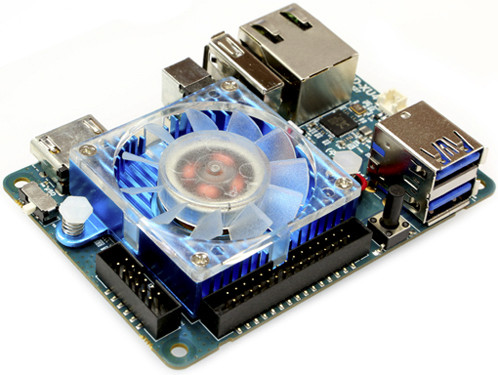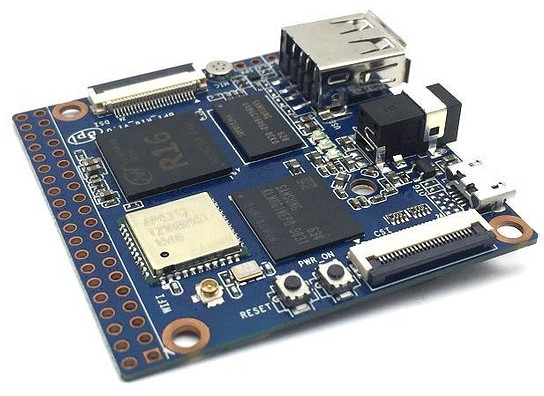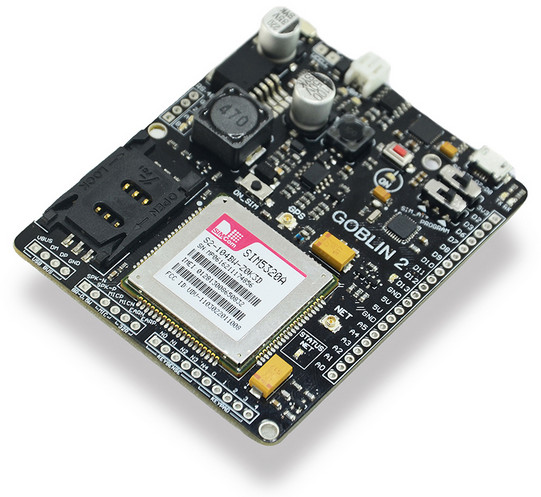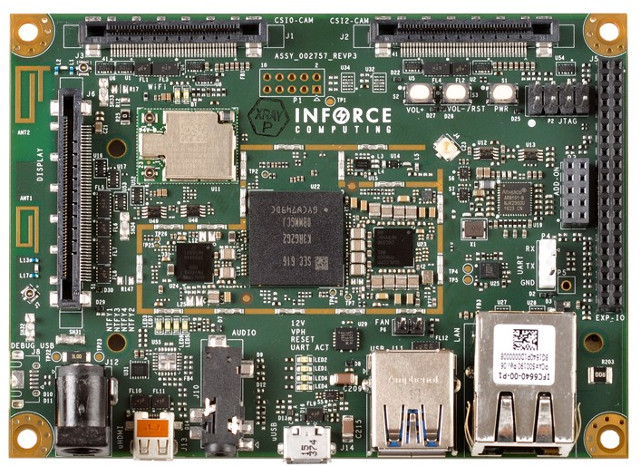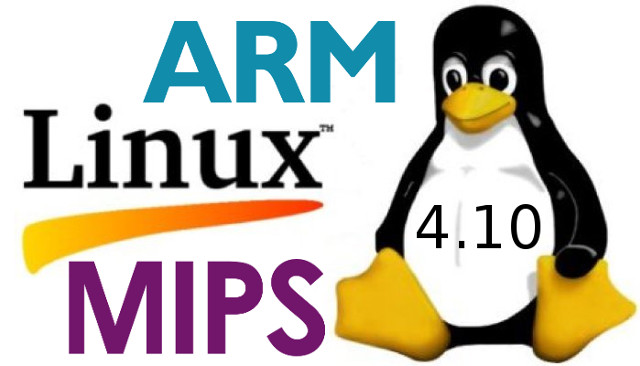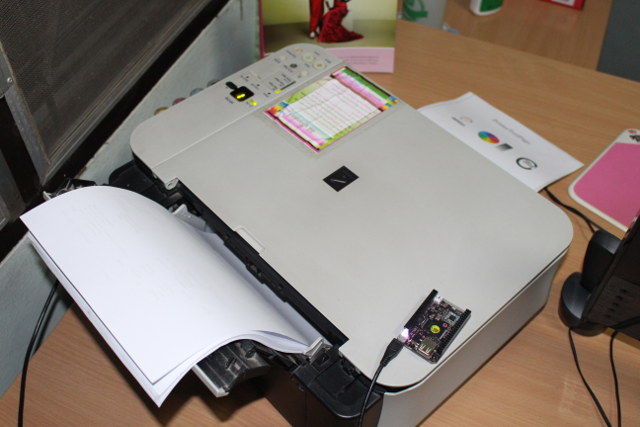ODROID-XU4 development board powered by Samsung Exynos 5422 octa-core processor launched in summer 2015, but even after two years, it’s one of the fastest, if not the fastest, low cost development board on the market. It is also equipped with Gigabit Ethernet and USB 3.0 ports, but so far at $74, it was quite much expensive than slower peers. Hardkernel has now decided to lower the price to $59 plus shipping, which is really a good deal in terms of price/performance, and you’ll also benefit from close to two years development, as the board now supports Linux 4.9 with updates promised until early 2019. Here’s a reminder of the technical specifications: SoC – Samsung Exynos 5422 quad core ARM Cortex-A15 @ 2.0GHz + quad core ARM Cortex-A7 @ 1.4GHz with Mali-T628 MP6 GPU supporting OpenGL ES 3.0 / 2.0 / 1.1 and OpenCL 1.1 Full profile System Memory – 2GB […]
Banana Pi BPI-M2 Magic is an Allwinner R16 Development Board with LCD and Camera Interfaces
Allwinner R16 is a quad core Cortex A7 processor found in Nintendo NES Classic Mini game console, but so far there was no development board based on the processor apart from Allwinner Parrot board that does not appear to be for sale. But Banana Pi has designed their own R16 development board, and released some information about BPI-M2 Magic board. Banana Pi BPI-M2 Magic specifications: SoC – Allwinner R16 quad core ARM Cortex-A7 processor with ARM Mali 400 MP2 GPU System Memory – 512MB DDR3 Storage – 8 GB eMMC flash (option: 16, 32 or 64GB) + micro SD slot Display Interface – 4-lane MIPI DSI connector Camera Interface – CSI connector supporting up to 5MP sensor, 1080p30 H.265 video capture Video Decoder – Multi-format FHD video decoding, including Mpeg1/2, Mpeg4, H.263, H.264, etc H.264 high profile 1080p@60fps Audio – On-board microphone Connectivity – Wifi 802.11 b/g/n, Bluetooth 4.0 LE […]
STMicro Introduces STM32 LoRaWAN Discovery Board & I-NUCLEO-LWAN2 STM32 LoRa Expansion Board
STMicroelectronics and Mouser have launched two new products with LoRa connectivity: STM32 LoRaWAN Discovery Board with an STM32L072 ARM Cortex M0+ MCU and Semtech SX1276 transceiver, and I-NUCLEO-LRWAN1 STM32 LoRa expansion board for STM32 Nucleo boards with an STM32L052 MCU and Semtech SX1272 radio transceiver. STM32 LoRaWAN Discovery Board B-L072Z-LRWAN1 STM32L0 Discovery kit LoRa specifications: LoRa Module – Murata CMWX1ZZABZ-091 with MCU – STM32L072CZ ARM Cortex -M0+ MCU @ 32 MHz with 192 KB Flash memory, 20 KB RAM, 20 KB EEPROM SX1276 transceiver supporting LoRa, FSK, GFSK, MSK, GMSK and OOK modulations Antennas – SMA and U.FL RF interface connectors, 50 Ohm SMA RF antenna Debugging – On-board ST-LINK/V2-1 supporting USB re-enumeration capability Expansion – Arduino Uno V3 connectors Misc – 7x LEDs, 2x push-buttons (user and reset) Power supply – Via USB bus or external VIN/3.3 V supply voltage or batteries; 3xAAA-type-battery holder for standalone operation (on the […]
Goblin 2 Arduino Compatible IoT Board Includes SIM5320A 3G & GPS Module
Veracruz, Mexico based Verse Technology has recently launched Goblin 2, an Arduino compatible IoT development, based on Atmel/Microchip ATmega328P MCU, featuring a built-in SIM5320A 3G and GPS module, supporting RS-485 communication, and providing 3.3/5 and 24V power output. Goblin 2 board specifications: MCU – Microchip Atmel ATMega328P AVR MCU @ 16 MHz with 1KB EEPROM, 32kB Flash, 2kB SRAM Wireless connectivity via Simcom SIM5320A USB 2.0 module: Dual-Band UMTS/HSDPA 900/2100MHz Quad-Band GSM/GPRS/EDGE 850/900/1800/1900MHz 1x SIM card slot High accuracy 16 channel GPS Expansion I/Os 6x ADC input with 10 bits resolution 10x digital in/out including 5 PWM RS-485 protocol @ 10Mbps for up to 256 nodes on the bus Header to Keypad, microphone and speaker for SIM I/O Misc – 8 LEDs for power, battery, networking, RS485, UART, plus one user LED; Power switch, RS-485 /GPIO switch, program / SIM AT+ switch Power Supply – 5V via micro USB port, […]
Trenz Electronic TE0808 UltraSOM+ is a Xilinx Zynq Ultrascale+ ZU9EG System-on-Module
Xilinx Zynq Ultrascale+ ARM Cortex A53 + FPGA SoC have now started to show up in boards such as AXIOM Board based on Zynq Ultrascale+ ZU9EG. Price for the board has not been announced, and while a similar Xilinx development kit goes for close to $3,000, some people are expecting the board to sell for $400 to $600. Since the price of FPGA vary a lot from a few dollars to $40,000 for the top end chips, I decided to find pricing info about Xilinx Zynq Ultrascale+ MPSoCs which lead me to Trenz Electronic TE0808 system-on-module, which was unveiled in May last year, and I’ll cover in the second part of this post, after – hopefully quickly – describing Zynq Ultrascale+ family and nomenclature, and addressing the price “issue”. First, there are three sub-families within Zynq Ultrascale+ MPSoC portfolio: CG models with 2x Cortex A53, 2x Cortex R5, FPGA fabric […]
Qualcomm Snapdragon 820 SBCs: Inforce 6640, iWave iW-RainboW-G25S, and DragonBoard 820c
We’ve already covered Qualcomm Snapdragon 820 system-on-modules such as Intrinsyc Open-Q 820 and Inforce 6601, which can be used with baseboards that are suitable for development, but so far I had not seen a single board computer (SBC) powered by the processor optimized for mass production and suitable for integration into products. Bu this is about to change, as three Snapdragon 820 SBCs are now (or soon will be) available with Inforce Computing 6640, iWave iW-RainboW-G25S, and DragonBoard 820c. Inforce 6640 SBC Inforce Computing 6640 Single Board Computer specifications: SoC – Qualcomm Snapdragon 820 quad core Kryo processor with 2x cores @ up to 2.2GHz, 2x cores @ up to 1.6GHz, Adreno 530 GPU, Hexagon 680 DSP System Memory – 4GB LPDDR4 Storage – Up to 64GB UFS 2.0 flash, microSD slot Video Output / Display Interface – 2x 4-lane MIPI-DSI DPHY 1.2 , 1x HDMI 2.0 interface for touch […]
Linux 4.10 Release – Main Changes, ARM & MIPS Architectures
Linus Torvalds has just released Linux 4.10: So there it is, the final 4.10 release. It’s been quiet since rc8, but we did end up fixing several small issues, so the extra week was all good. On the whole, 4.10 didn’t end up as small as it initially looked. After the huge release that was 4.9, I expected things to be pretty quiet, but it ended up very much a fairly average release by modern kernel standards. So we have about 13,000 commits (not counting merges – that would be another 1200+ commits if you count those). The work is all over, obviously – the shortlog below is just the changes in the last week, since rc8. Go out and verify that it’s all good, and I’ll obviously start pulling stuff for 4.11 on Monday. Linus Linux 4.9 added Greybus staging support, improved security thanks to virtually mapped kernel stacks, […]
How to Use CHIP Board as a Linux Printer & Scanner Server
We have a Canon Pixma MP250 series multi-function USB printer connected to a Windows 10 laptop at home, and for several years, I had no problems printing from my Ubuntu computer to that printer. However, this setup recently stopped to work, and whatever I would do, printing would never start from my Ubuntu PC, even though the file was (allegedly) successfully transfered to the Windows 10 laptop connected to the printer. So I decided to setup my own printer server, as well as a scanner server since it’s a multi-function printer, using one of the boards from my collection. As I opened my cabinet, I wondered whether I would use an Orange Pi board, Raspberry Pi board, or Nano Pi board, but I needed WiFi since there’s no Ethernet in the office where the printer is located, and I found that Next Thing CHIP board was the ideal candidate as […]


